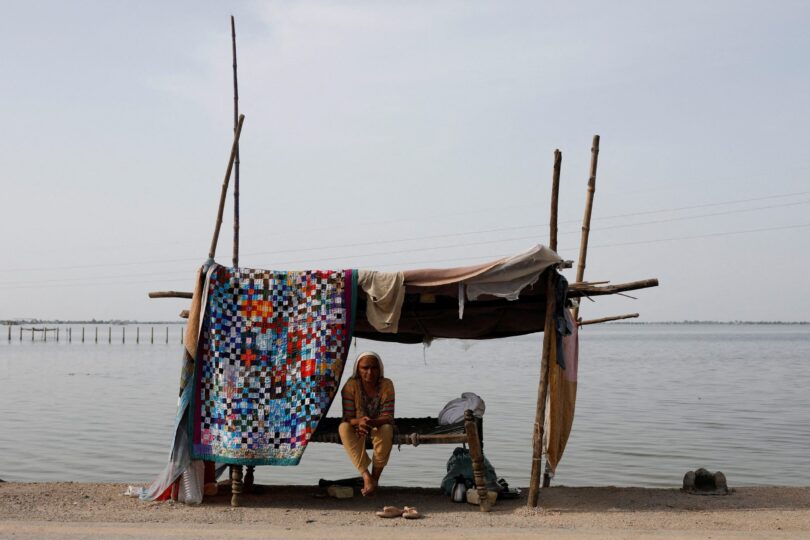F.P. Report
PESHAWAR: The Relief, Rehabilitation and Settlement Department, Khyber Pakhtunkhwa on Sunday unveiled the Monsoon Contingency Plan 2023, a comprehensive strategy aimed at minimizing disaster risks and facilitating a coordinated and timely response. Under the supervision of Relief Department the Provincial Disaster Management Authority (PDMA) has actively engaged district administration, provincial and federal line departments, as well as humanitarian partners in developing this plan, incorporating valuable lessons learned from previous incidents.
The primary objective is to mitigate the impact of disasters and safeguard the lives and livelihoods of the people residing in the province.
According to the Monsoon Plan 2023, ten districts, including Chitral Upper, Chitral Lower, Swat, DI Khan, Tank, Charsadda, Nowshera, Kohistan Upper, Shangla, and Dir Upper, are identified as very highly prone. Additionally, six other districts, Malakand, Dir Lower, Tor Ghar, Kohistan Lower, Kolai Palas Kohistan, and Peshawar, are classified as high risk.
Floods have been an ongoing issue, particularly in lowland areas, resulting in waterborne diseases, loss of human and livestock life, and damage to infrastructure.
The Monsoon Plan 2023 addresses this concern through a comprehensive flood risk management approach that encompasses prevention, mitigation, preparedness, emergency response, and recovery measures.
Prevention measures focus on discouraging construction in current and future flood-prone areas, adapting future developments to flood risks, and promoting appropriate land-use and agricultural practices.
Mitigation strategies include structural and non-structural measures aimed at reducing the likelihood and impact of floods in specific locations. Preparedness efforts aim to educate the population about flood risks and provide guidance on appropriate actions during a flood.
Emergency response plans are being developed to ensure a swift and effective response in the event of a flood. Furthermore, the plan incorporates recovery and lessons learned components to minimize the social and economic impacts on affected communities and facilitate their return to normalcy.
The PDMA has actively promoted the Contingency Planning process as a preparedness measure for natural hazards, particularly during the monsoon season.
The Monsoon Plan 2023 builds upon the lessons learned from past flood events, such as the catastrophic floods of 2010, heavy monsoon rainfalls of 2011, flash floods in 2012, and subsequent disasters.
By conducting risk and vulnerability assessments, the plan aims to strengthen preparedness and response capacities while identifying and addressing gaps and challenges.
Key outcomes expected from the Monsoon Plan 2023 include raising awareness and building capacity for effective response, anticipating and allocating necessary resources based on threat perception, developing integrated planning capacities, and addressing gaps through preparatory measures.
Abdul Basit, Secretary Relief Department, emphasized that disaster risk reduction and management are integral to development and require continuous assessment of vulnerabilities and risks. Contingency planning plays a vital role in defining preparedness mechanisms, deployment strategies, and resource utilization before an emergency response is needed.
The Relief is committed to effectively implementing the Monsoon Plan 2023 by considering the recommendations and expertise of all stakeholders involved. This endeavor reflects a shared vision of protecting lives, preserving infrastructure, and minimizing the impact of floods on communities residing in flood-prone areas.
Abdul Basit further said PDMA KP has already dispatched relief and necessary items to all District Administrations and concerned line departments. Additionally, other essential items can be provided during times of need.
The Relief Department is also conducting mock drills and exercises across the province to enhance preparedness and response capabilities.
Janat Gul Afridi, Director General of PDMA, stated that the Monsoon Contingency Plan for 2023 focuses on mitigating the potential impact of floods, building on the lessons learned from previous years’ events. It includes the implementation of improved early warning systems, streamlined evacuation procedures, and enhanced communication channels.
Moreover, the plan places significant emphasis on community engagement to ensure their active participation in disaster preparedness. By involving and empowering the community, the plan aims to enhance resilience and response capabilities, fostering a collaborative approach to tackle the challenges posed by monsoon-related disasters.
Spokesperson Relief Department Taimur Ali said contingency plan focuses on planning for the upcoming Monsoon 2023 hazards to identify and analyze related risks for not just their humanitarian impacts but also the associated adverse effects on private and public infrastructure and to define the roles and responsibilities of diverse stakeholders for preparedness and response.
Gender integration in policies, plan and strategies is important to align priority groups as per needs to allocate resources and make strategic framework for the vulnerable groups including Women, children, persons with disabilities, transgender and minorities.
PDMA has installed flood Early Warning System (EWS) in the upper catchment areas on Seven (07) critical points 5 rivers and 2 nallahs to monitor the water level and generate early warning intimation in order to protect the human losses.
This Early Warning System analyzes existing data with previous flash flood historical data and upon reaching a dangerous level the system generates alert signals. PDMA-PEOC remains active round the clock (24/7) with free of cost Emergency Helpline 1700.







